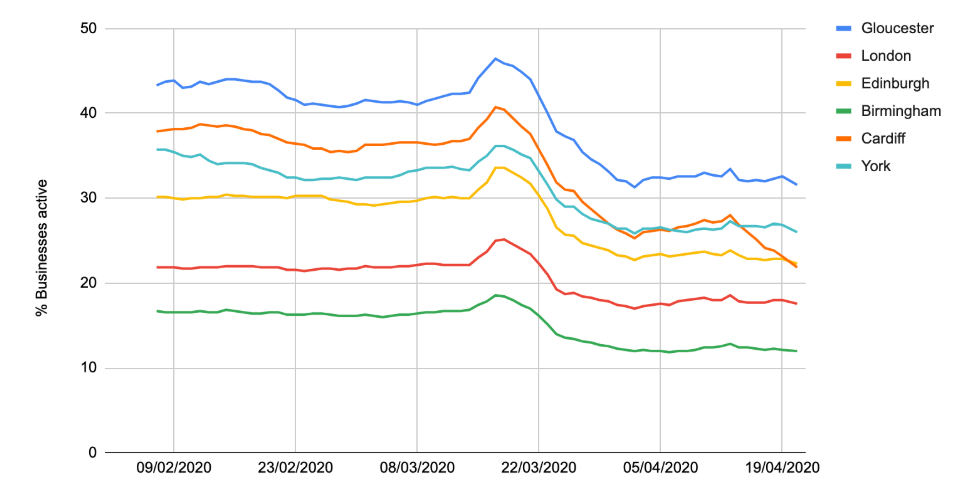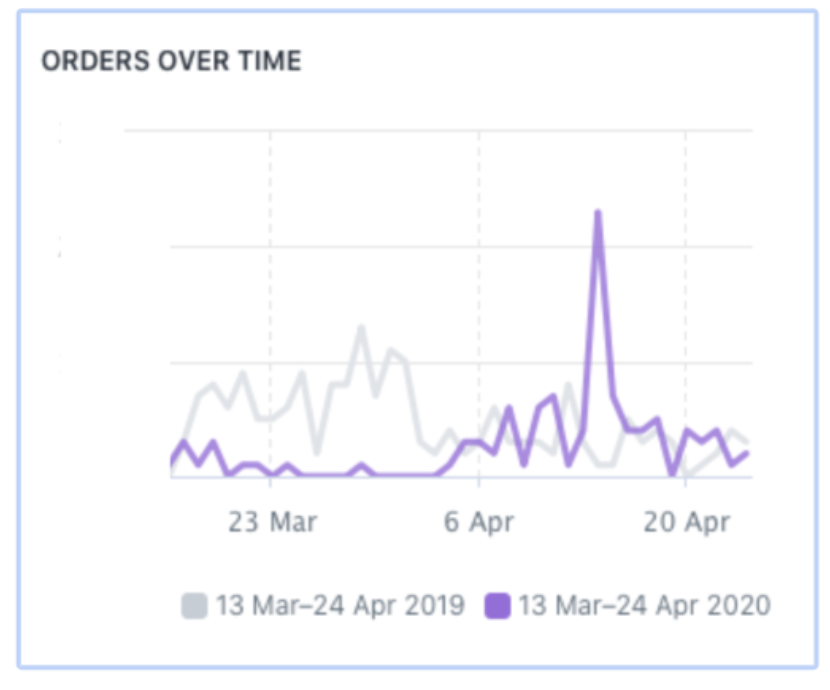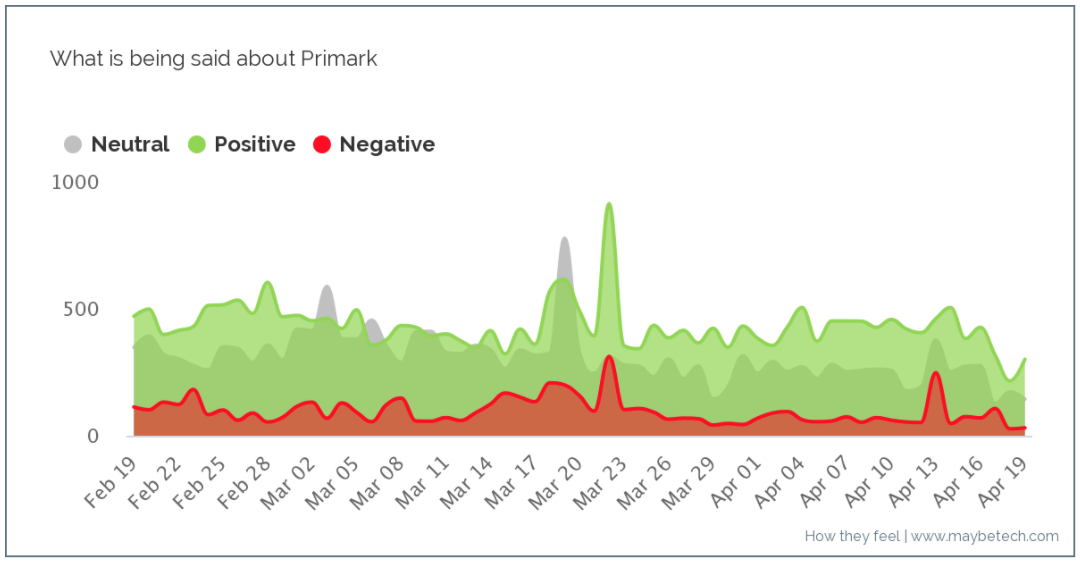According to research by Forbes, pre-lockdown consumers were spending an average of 2 hours and 22 minutes on social media per day. Maybe* profiled 300K businesses and organisations across 1300 towns and cities in the UK and found that though 78% of these businesses were not active on social media on a daily basis pre-lockdown, that number has rocketed to 88% since, despite the fact that consumers are now spending 40% longer on social channels.
There’s one place to go to engage with your customers right now, it’s on social media
The weekly moving average of the % of organisations active on social media in any given town centre.

So, what's the takeaway? If there's one place to go to engage with your customers right now, it's social media!
This is a lesson quickly learned and acted upon by two retailers - clothing heavyweight Primark and independent shoe boutique Keith Scarrott. We've taken a look at how these brands are utilising social media to stay connected with customers and secure sales during the lockdown.
Remaining connected to customers
At a time of increased consumer activity and attention, businesses responded to the situation by decreasing the amount of connection to their customers. Likely driven by their own sense of uncertainty and a desire to remain sensitive in their communications, many organisations clearly reduced or ceased their communication with customers. Yet several businesses small and large opted to pivot their usual or planned messaging to one more appropriate and relevant to the time.
By offering help, raising spirits, supporting the local community or continuing to engage with their customers online to retain some levels of normality. Some businesses have successfully ensured they have remained front of mind, increased brand sentiment or been able to trade well online.
High end shoe retailer Keith Scarrott has more than doubled its online sales in April 2020 on its sales in April 2019 and smashed its month on month sales.

Orders over time for Keith Scarrott comparing March and April in 2019 and 2020.
Keith Scarrott
The brand launched a new trainer line at a reduced price point appealing to a wider customer demographic than its usual shopper. By using the Maybe* social listening insights, Keith Scarrott was able to identify topics of conversation in the local area about school closures and stressed mums needing to find things for the little ones to do.
Targeting stay at home mums looking to treat themselves, the shoe retailer not only beat sales in a tough environment, but also increased its awareness and consideration among a new customer base.
The brand teamed this with social media content celebrating its heritage in the local area. To keep kids entertained and relieve further pressure on harassed parents, the brand launched a trainer drawing contest for children. They also continued to post about how other small and independent businesses in the area were continuing to trade and serve customers, and tagged in key commerce influencers in the area such as the local BID.
Read the full case study explaining how Keith Scarrott doubled its year-on-year sales during lockdown here.
View this post on Instagram
Primark
Meanwhile at the other end of the spectrum, Primark has reported a decrease of month-on-month sales from £650 million to £0. Primark does not have an eCommerce solution for customers. However it has not missed a beat with its ongoing social media communication.
Rather than focus on its product, the brand has shared content from influencers, its designers, tips and tricks for staying positive, working from home and beauty advice.
View this post on Instagram
View this post on Instagram
Positivity about Primark
Despite not being able to trade, Primark has seen no negative impact on the sentiment about it. Nor has it received negative feedback about its content. Rather than being deemed insensitive or non essential the brand has continued to post in its usual manner, and customers still enjoy engaging with the brand. By changing the theme of its content yet retaining its usual voice and activity levels, the brand’s level of positive sentiment has remained consistent and customers can not wait to start spending with them again soon.
Read the full Primark case study here.








